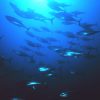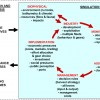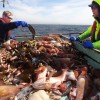The Puntlab has been involved in research on the population dynamics and management of cetaceans, pinnipeds amd seabirds.
André Punt has been a member of the Scientific Committee of the International Whaling Commission since 1989, and has been involved in conducting stock assessments to determine the status of the Bering-Chukchi-Beaufort Seas stock of bowhead whales, the eastern North Pacific stock of gray whales, minke whales in Southern Hemisphere, and the North Atlantic stock of humpback whales. The assessments for the bowhead and gray whales were amongst the first to make use of Bayesian methods.
André has also been involved in the development of the Revised Management Procedure for commercial whaling, including its implementation for stocks of Brydes and minke whales in the western North Pacific and fin and minke whales in the North Atlantic. Management Procedures have been developed for three aboriginal subsistence whaling operations: the Bering-Chukchi-Beaufort Seas stock of bowhead whales, the eastern North Pacific stock of gray whales, and humpback whales off west Greenland.
John Brandon (PhD, 2009) developed a Bayesian model for the eastern North Pacific gray whales as part of his PhD research and is now a member of the Scientific Committee of the International Whaling Commission. John and André continue to collaborate with scientists from National Marine Mammal Lab and the Southwest Fisheries Science Center to improve stock assessments for marine mammals in the U.S.
Gavin Fay (MS, 2004; PhD, 2012) constructed models of Steller Sea Lions in Alaska to explore hypotheses for their decline, and to determine if experimentation can be used to distinguish among the hypotheses. He also developed individual-based models to explore foraging strategies for Steller Sea Lions.
Charlotte Boyd (PhD, 2012) investigated the response of seabirds to changes in the availability and distribution of small pelagic prey. As part of her research, she developed a Hidden Markov model to understand the decisions seabirds make when they forage. She also constructed an individual-based forging model for Peruvian Boobies and Guanay Cormorants to understand how they react to changes in prey distribution and abundance.




